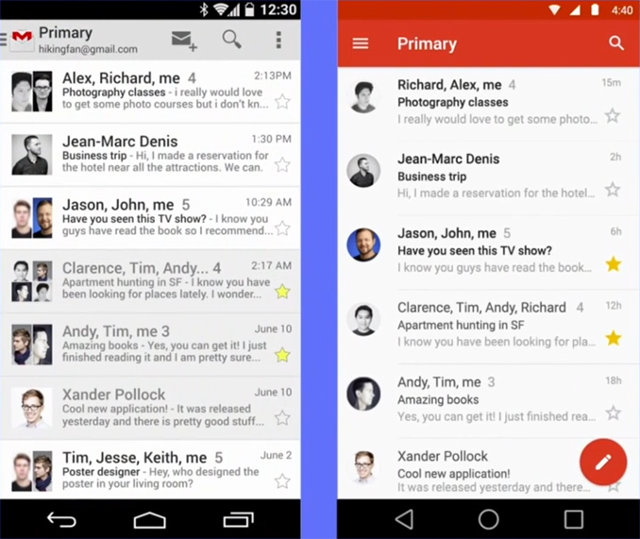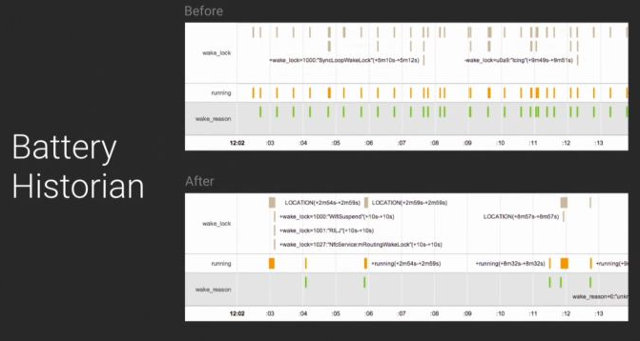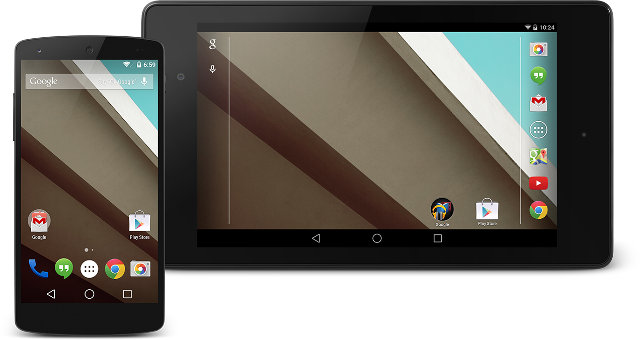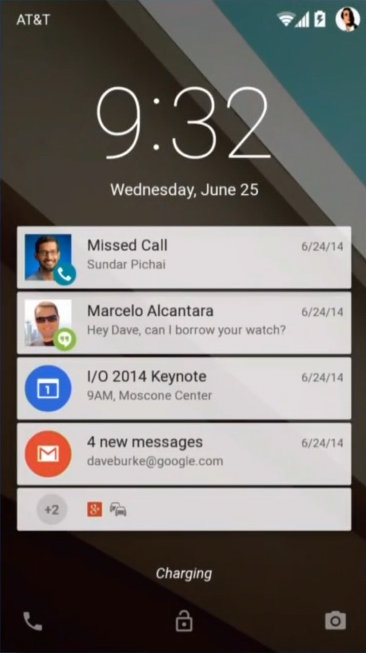Google I/O is taking place right now in San Francisco, and the company made several announcements. Although they have not announced the full codename of Android 5.0, referring to the next version as “Android L” (Lollipop would be nice though), but they’ve already documented the key changes made to Android L, and a developer preview will be released later today (26 June), together with binary images for Google Nexus 5 and Nexus 7.
Beside the smartphone and tablet developer preview, there will be 3 other SDKs for Android L:
- Android Wear SDK – Android for wearables with sync notifications, wearable apps, data transfer APIs, and voice actions, e.g. “Ok Google, call mum”.
- Android TV Preview SDK – Android for TVs with pre-built fragments for browsing and interacting with media catalogs, in-app search, and recommendations.
- Android Auto SDK – Android for the car with apps featuring consistent user experience between vehicles, and minimizing distractions.
I’ll go through various software and hardware announcements for Android Wear and TV in separate blog posts, and probably skip Android Auto for now.
So what’s new in Android L Developer Preview?
Material Design
Material Design is is a new design language that will let developer create app which look similar to Google Now. Google chose the name “Material” as it is apparently inspired from real materials such as paper and ink. Android L user interface will be entirely designed with Material Design. The best is to look at an example.

On the left, we’ve got the current Gmail app, and on the right the newly designed app for Android L. Lots of it looks like cosmetic changes, but you’ll have noticed the three dot and new mail icons are gone, and all menu will be accessible via the top left icon. There are also some light and shadow effects that will make users feel like they’re touching real elements.
More details can be found in this Material Design presentation (PDF).
Improved Notifications
Notifications have also changed with a new design based on Material, and the ability to display notifications on the lock screen.
I understand lockscreen notifications are optional, and if you don’t like to show them in the lock screen using visibility controls. As you can see from the screenshot above it works very similar to Google Now which cards that you can discard once you’re done. Notifications will also be able to pop-up in games or other full screen apps, and you’ll be able o take action within the notification, for example by declining or accepting a video call request.
Recents
The list of recent apps will become the list of recent everything, simply called “Recents”, as it will include both apps, web pages, and documents.
Better Tools for Improving Battery Life
As devices become more powerful, they also become more power hungry despite efforts by SoC designers to reduce energy usage. Badly programmed apps are however the main culprit of short battery life, so Google has introduced Project Volta to help user and developers optimize power consumption. Developers can use “Battery Historian” tool to monitor power consumption of different processes, and which hardware block (e.g. Cellular radio) is currently being used.
 Users will also have their own app / feature dubbed “Battery Saver” to improve battery life, and Google claims their Nexus 5 should be able to last an extra 90 minutes on a charge with Battery Saver enabled. This is achieved by reducing the performance of the device once the battery has dropped below 20% charge. At that time, a notification would pop-up to let the user select he wants to enable Battery Saver mode.
Users will also have their own app / feature dubbed “Battery Saver” to improve battery life, and Google claims their Nexus 5 should be able to last an extra 90 minutes on a charge with Battery Saver enabled. This is achieved by reducing the performance of the device once the battery has dropped below 20% charge. At that time, a notification would pop-up to let the user select he wants to enable Battery Saver mode.
Under the hood improvements
As as been widely reported, Google recently killed Dalvik in a recent commit in AOSP, and ART will become the default JAVA runtime using ahead-of-time compilation for speedier application loading time, and memory usage improvements. Google also claims it provides true cross platform support for ARM, MIPS and x86.
Android L will support 64-bit instructions including ARMv8, x86-64 and MIPS64. This will provide a larger number of registers, and increased addressable memory space. Java developers won’t needto change their apps for 64-bit support. One the first Android64 devices is likely to be the Nexus 9 tablet powered by Nvidia Tegra K1 Denver as previously reported.
On the graphics side, Android L adds support for OpenGL ES 3.1, and includes Android Extension Pack for developers with tesselation and geometry shaders and other features that should bring PC and console class graphics to Android games according to Google.
Via Anandtech and Liliputing

Jean-Luc started CNX Software in 2010 as a part-time endeavor, before quitting his job as a software engineering manager, and starting to write daily news, and reviews full time later in 2011.
Support CNX Software! Donate via cryptocurrencies, become a Patron on Patreon, or purchase goods on Amazon or Aliexpress






